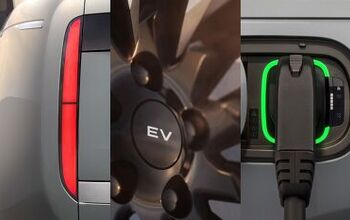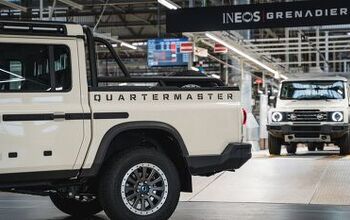Curbside Classic: The Best Big Car Of Its Time: 1970 Chevrolet Impala

I wasn’t going to do this car today. But venting my spleen on yesterday’s 1971 Ford Galaxie 500 and all the discussion it prompted forces the issue: what was the best of the big popular-priced big cars of the era? Having handily eliminated the Ford from the running leaves a tough choice: The Plymouth Fury/Dodge Polara, or the Chevy Impala. Now I have a pretty major soft spot for the big Mopars of the era, and I wrote quite the paean to a ’69 Fury here. But that memorable ride was colored by the circumstances of the day. Truth be told, both the big GM and Mopars had it all over the Fords, but there were a few crucial differences between the two; one in particular.
I had three driving experiences with 1970 Chevys, each quite different, yet they were all in four-door sedans. Well, those were the driving ones. There was another, as a worshiper and passenger, and we might as well get that out of the way first. In the fall of 1969 at Towson Senior High, a brand new dark green ’70 Impala convertible with a white top and interior, sporting Rally wheels and the numbers 454 on the front fender appeared on the parking lot, daily. Who the hell would buy their kid that; I thought to myself as I walked to school each morning. Life is truly cruel.
Even more so, when I saw who the driver was: an Italian-American…well, I can’t quite summon up the word “girl” to describe her, because she looked/seemed at least twice as old as my pathetic late-blooming self. Very much a Linda Vaughn “Miss Hurst” type, but her bee-hive was (still) black. Not my cup of tea, and I wouldn’t have had the guts to get within ten feet of her. Daddy bought the Impala for her; he was probably in the sanitation business.
But one day a couple of us juniors were hooking classes at mid-day and walking out the parking lot, and there she comes, off to her afternoon job (she was in some marketing program that let her do that). We stuck out our thumbs, and against all hope and odds she stopped. Of course we goaded her to floor it, and sure enough, she obliged us with a fairly short but highly memorable blast. She might as well have been opening her most intimate orifices to us as the giant secondary venturies on the Quadrajet carb kicked in and sucked the fresh spring air. It was probably the lo-po 365 hp version, but who cared? I should never have told this impressionable preamble, because now you’re convinced I’m lacking any impartiality (or taste).
In that summer of 1970, I finally became a legal driver after almost three years of illicit preparation. I made up some BS story to the driver’s ed teacher that I had lived in Iowa and had legally driven there. So he skipped the parking lot preliminaries with me, and told me to just get in and drive out to Loch Raven Reservoir and back. A brand-new 1970 Impala sedan beckoned, and off we went. And almost immediately, I discovered the main reason why this is a better car than the Chrysler products: the steering.
I had never driven a big American car with power steering like this. The Saginaw unit had a variable ratio, was surprisingly accurate, with a modicum of actual feedback. Who knew that existed? Not this seventeen-year old. And GM’s suspension guys were a little less sleepy than the competition too. Yes, the Mopars might have been a tad more buttoned down, which in some circumstance gave it an edge, perhaps, in cornering. But lets not forget, the mission of these cars was maximum comfort, quiet and refinement. And in that equation, the Chevy had them beat.
It didn’t end with a leisurely but impressionable cruise around Loch Raven, though. That very summer I started hanging out with a girl in my neighborhood whose parents had just bought the same spec Impala sedan, with the standard 350 V8 and Turbo-Hydramatic. We drove it out to go skinny-dipping in the Gunpowder many a hot night. And I was driving big Fords during the day at work. I was conducting the most prolonged comparison test in history.
Lets start with the basic structure: the 1970 was the last year of the perimeter-framed generation that started in 1965. By 1970, it benefited from what any car (usually) does after having been made for six years: build quality was the best. The Ford was a distant third, and the new fuselage Mopars felt a little short on development time, at least the first year ’69 I drove. The Chevy was impeccably quiet, refined and smooth. It’s engine started and ran smoother than the other two too. Chryslers, like our own ’65 Coronet, were notorious stallers and ran rough in rainy weather until electronic ignition came along. The Fords didn’t start as effortlessly. GM’s Rochester carbs seemed to be better sorted out.
Chevy small blocks were always velvety runners, the 327 being a real gem. The 350, with its longer stroke, couldn’t quite equal it, but its extra torque was welcome. The level of standard V8 power, with 250 hp, was a substantial improvement over the 283 that had to huff and puff through the Powerslide just a few years earlier. The Turbo-Hydramatic was undoubtedly the best autobox in the world at the time terms of smoothness. Here’s the deal: in 1970, the standard engine/automatic combo of this plain-Jane pedestrian sedan was a good as any in the world in terms of its mission. You’d have to go to a Mercedes 6.3 for competition, and its transmission was a lot harsher. Never mind its price.
And by 1970, the Chevy finally had decent sized 15″ wheels and tires, compared the absurd little 14″ donuts they were putting on these cars a few years earlier. And disc brakes! The improvement from 1964 to 1970 was pretty remarkable, and made 1970 was a high water mark for the big American sedan, for at least another seven years anyway. The 1971 big GM cars had a shocking drop in quality of build and materials, and were drastically bigger and less efficient. A giant step backwards from the comfortable but fairly-reasonable sized 1970s.
Yes, the 1970 Chevy was the pinnacle of its genre. It was supremely refined, quiet, reasonably well built, comfortable, and if ordered with the available HD suspension, was a decent handling and steering car considering its size. Mopar steering was utterly devoid of any feel or sensation, and the Torque-Flite was rugged and efficient, but didn’t shift as smoothly. And as hard-charging as the 383 and 440 were, they still couldn’t hold a candle to the Chevy rat motors.
I almost forgot; my third and very much final ’70 Chevy sedan experience. It was mostly the polar opposite of the others so far, but it still earned my grudging respect. In 1976, I got a job with Yellow Cab of San Diego driving a taxi (obviously). As the newest driver, I got the oldest car: a totally clapped out ’70 Chevy with probably well over a half-million miles on it. And it was the beneficiary of GM’s willingness to accommodate any wish of its fleet buyers: it had a tired 250 CI six backed up by the ancient two-speed Powerglide, manual (!) steering, and un-assisted drum brakes. 1950 technology was just an RPO away.
I drove this poor thing mercilessly, tearing up and down I-5 at eighty-five, and ripping through San Diego’s endless canyons with the tires howling. Speaking of which, these were tires unlike any I’d ever seen before or again: special taxi-cab rubber that was unusually wide, like a wide-oval, but the tread was totally smooth except a series of straight cuts, that would be re-cut when the “tread” got low. It looked exactly like the F1 tires now in use. Bizarre.
One day, after weeks of the most extreme abuse, I was leaving the garage and stopped a tad harder than average for a light, at about 25 mph. The left front wheel sheared off, thanks to a ball joint that gave out then instead of the un-guard-railed canyon curve I had been screeching down the day before. It was like a racehorse stumbling out of the gate, and it had to be put down. They gave me a 1971 fat-boy, still with a six and Powerglide, but Chevy finally put a stop to the manual steering for 1971. But I hated it compared to the ’70; the body was a bucket of clattering junk, and the rear seat bottom cushion wasn’t even attached anymore. The ’70 felt lithe and lively compared to this heap of jello, even with a six and biceps-building steering.
What a beginning and end to my ’70 Chevy rides, from that lust-object 454 convertible to that tired smoking taxi. They’re not exactly what I day-dream about these days, but if I could have a time warp shopping spree of any big sedan from that era, it would be a black ’70 Impala four door, with the 454, HD suspension, Rally wheels…a lot like the one in the picture here. Sorry, Mopar fans, but those wide hips don’t quite cut it compared to a mean, lean, clean-steering Chevy.

More by Paul Niedermeyer
Latest Car Reviews
Read moreLatest Product Reviews
Read moreRecent Comments
- Zerofoo No, I won't miss this Chevrolet Malibu. It's a completely forgettable car. Who in their right mind would choose this over a V8 powered charger at the rental counter? Even the V6 charger is a far better drive.
- Offbeat Oddity Nope, I won't miss it. I loved the 2008-2012 Malibu, but the subsequent generations couldn't hold a candle to it. I think the Impala was much more compelling at the end.
- Zerofoo An almost 5000 pound hot hatch that fell out of the ugly tree and hit every branch on the way down? No thanks.
- Tassos Jong-iL This would still be a very nice car in North Korea.
- Jeff One less option will be available for an affordable midsize sedan. Not much can be done about GM discontinuing the Malibu. GM, Ford, and Stellantis have been discontinuing cars for the most part to focus on pickups, crossovers, and suvs. Many buyers that don't want trucks or truck like vehicles have moved onto Japanese and South Korean brands. Meanwhile large pickups and suvs continue to pile up on dealer lots with some dealers still adding market adjustments to the stickers. Even Toyota dealers have growing inventories of Tundras and Tacomas.








































Comments
Join the conversation
Thanks for this-- and your 1960 Impala piece. As usual, they brought back a lot of memories. The first car my parents owned after having kids was a 1961 Impala two door (white with blue stripes). I'm the oldest kid, so I remember it well because I was already five (we had been living overseas with no car) and it was my first experience riding "our" car. The next car my family owned (in the US, anyway, after more years overseas) was the exact car pictured-- green, dark green hardtop 1970 Impala coupe. We lived in Dallas and it had AC. Wow. What a great car it was. Next up was a 1974 Caprice sedan. Nasty bronze and too long for our garage door to shut with it inside (true). Not that great a car. By then I worked in a gas station and knew enough to keep it running for my parents. They moved to Datsun and Toyota when I went to college.
I bought a 1970 Chevy Impala in 1981 for $500. It was in need of a little body work and a paint job, but everything else was in good condition. It sported two doors, standard bench seat, a 350, a slip and slide two speed transmission (I think), and a vinyl top that I hated. I had wanted the car from the first time I saw it because I was into low riders. The Impala was king of low riders, but I had never seen a '70 Impala lowered. So I dropped it and added a chain steering wheel, Krager rims, and primer paint to hold me over. I loved that car, but didn't get my license for another year. In an attempt to imitate my older brother, I raced around a grocery store parking lot when it was wet from rain. It was like the third time I ever drove the car. Of course I hit a curb thingy, and when I did it bent everything under the hood. The car was scrapyard material after that. Since that day I have never tried to hot rod a car. I still love the old Impalas.